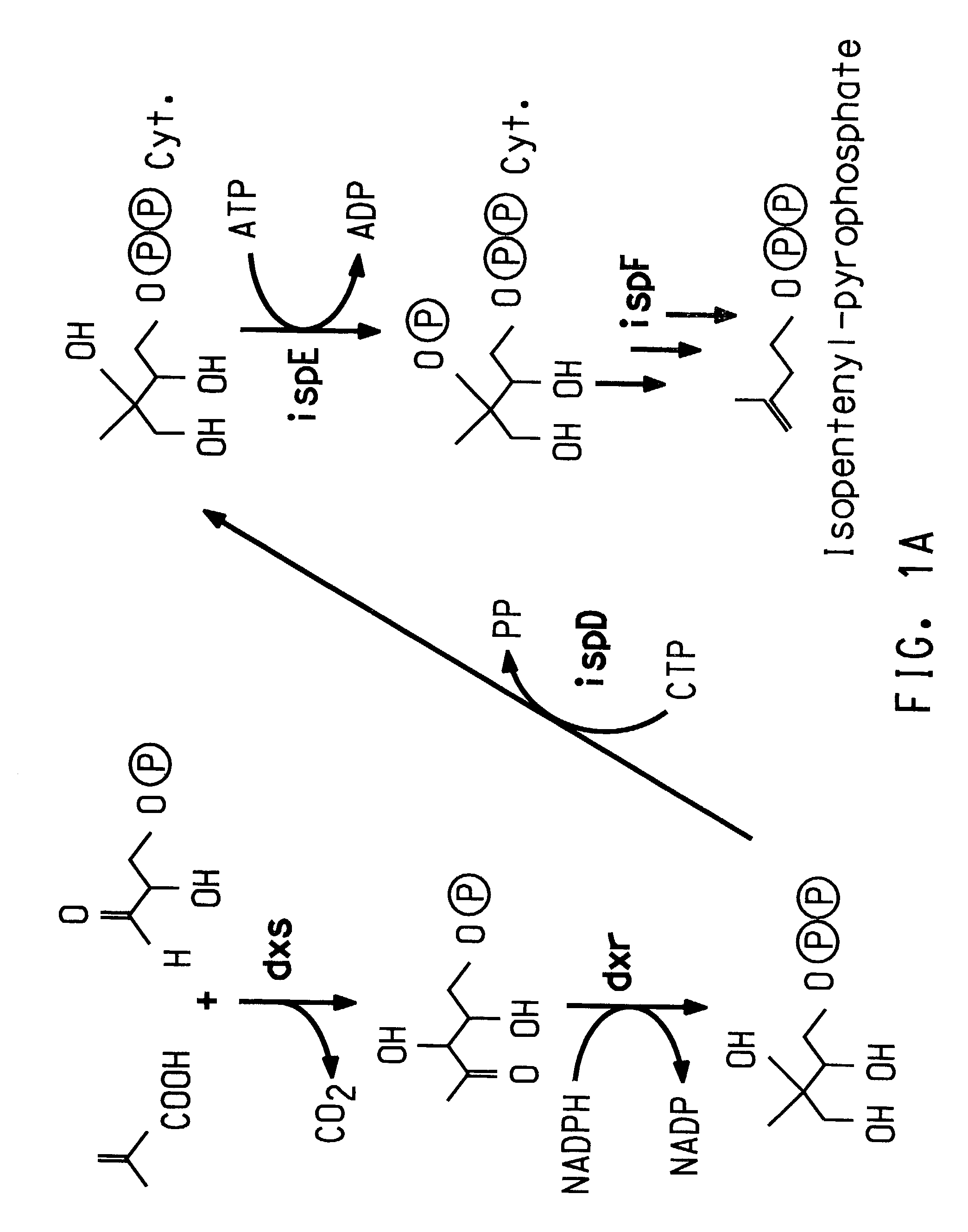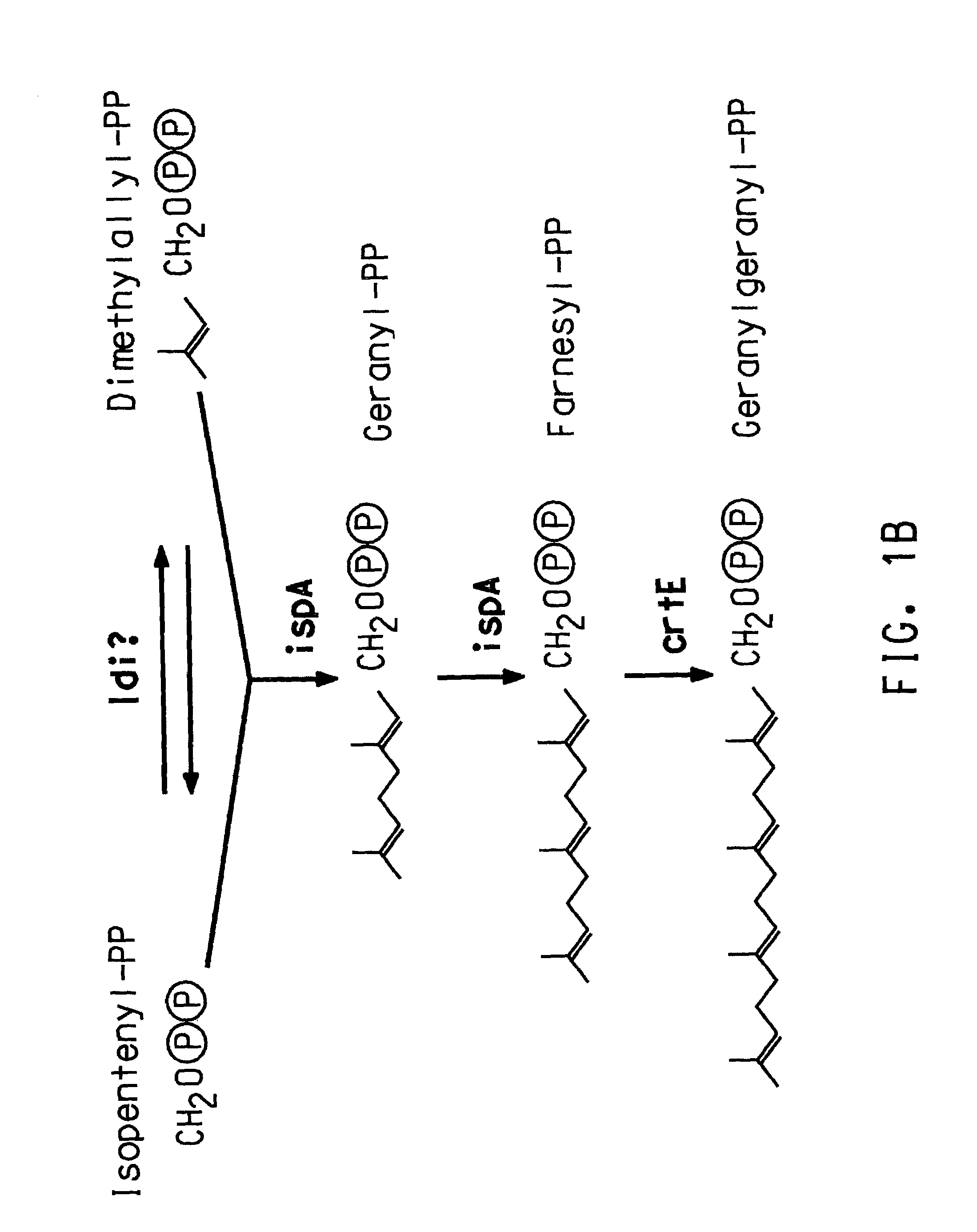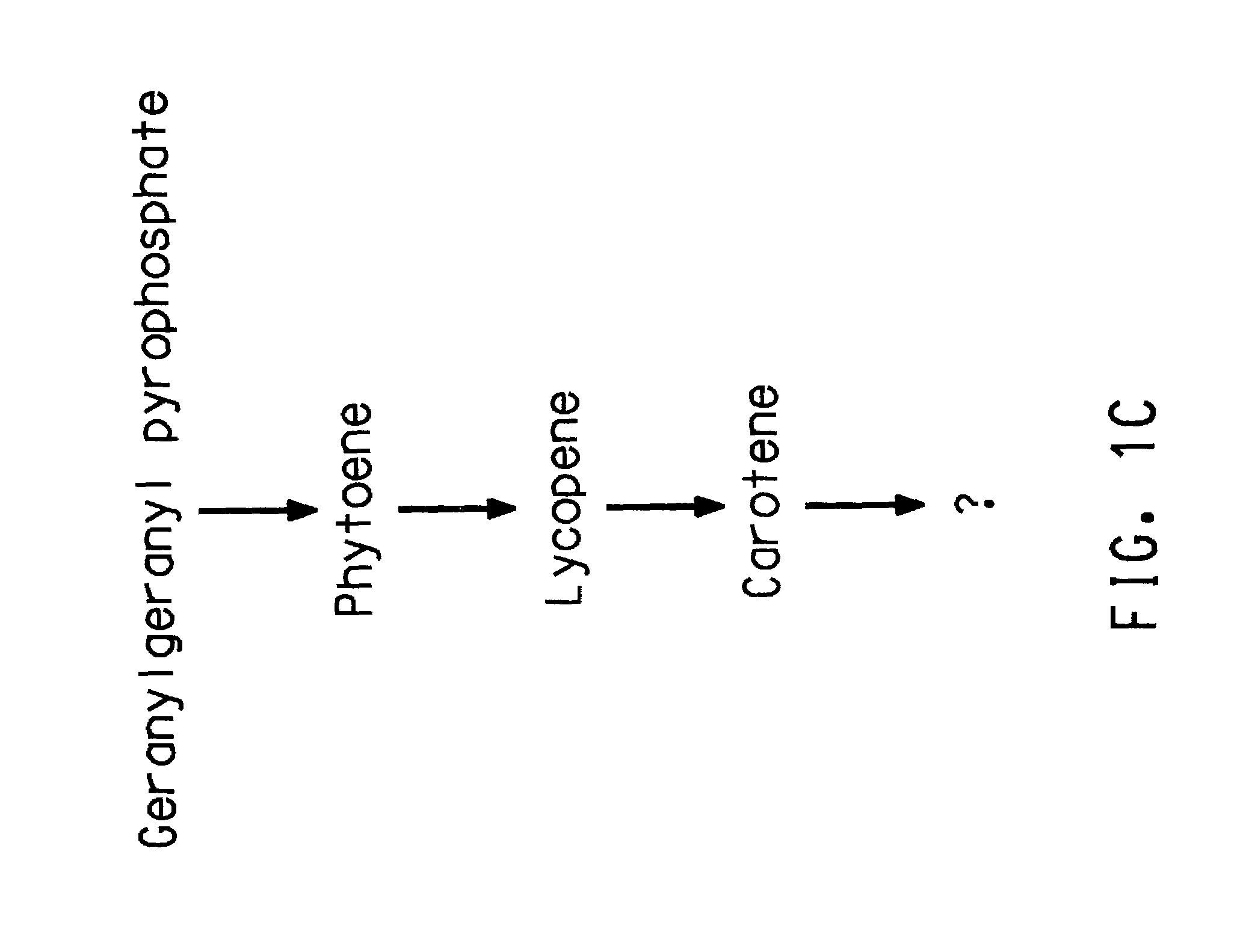Genes involved in isoprenoid compound production
a technology of isoprenoid compound and gene, applied in the field of microorganisms, can solve the problems of difficult and expensive chemical production, and achieve the effects of easy production, potent antioxidant properties, and good production hosts
- Summary
- Abstract
- Description
- Claims
- Application Information
AI Technical Summary
Benefits of technology
Problems solved by technology
Method used
Image
Examples
example 1
Isolation and Characterization of Strain AN12
[0174]Example 1 describes the isolation of strain AN12 of Rhodococcus erythropolis on the basis of being able to grow on aniline as the sole source of carbon and energy. Analysis of a 16S rRNA gene sequence indicated that strain AN12 was related to high G+C Gram positive bacteria belonging to the genus Rhodococcus.
[0175]Bacteria that grew on aniline were isolated from an enrichment culture. The enrichment culture was established by inoculating 1 ml of activated sludge into 10 ml of S12 medium (10 mM ammonium sulfate, 50 mM potassium phosphate buffer (pH 7.0), 2 mM MgCl2, 0.7 mM CaCl2, 50 μM MnCl2, 1 μM FeCl3, 1 μM ZnCl3, 1.72 μM CuSO4, 2.53 μM CoCl2, 2.42 μM Na2MoO2, and 0.0001% FeSO4) in a 125 ml screw cap Erlenmeyer flask. The activated sludge was obtained from a wastewater treatment facility. The enrichment culture was supplemented with 100 ppm aniline added directly to the culture medium and was incubated at 25° C. with reciprocal sh...
example 2
Preparation of AN12 Genomic DNA for Sequencing and Sequence Generation
[0178]Genomic DNA preparation. Rhodococcus erythropolis AN12 was grown in 25 mL NBYE medium (0.8% nutrient broth, 0.5% yeast extract, 0.05% Tween 80) till mid-log phase at 37° C. with aeration. Bacterial cells were centrifuged at 4,000 g for 30 min at 4° C. The cell pellet was washed once with 20 ml 50 mM Na2CO3 containing 1M KCl (pH 10) and then with 20 ml 50 mM NaOAc (pH 5). The cell pellet was gently resuspended in 5 ml of 50 mM Tris-10 mM EDTA (pH 8) and lysozyme was added to a final concentration of 2 mg / mL. The suspension was incubated at 37° C. for 2 h. Sodium dodecyl sulfate was then added to a final concentration of 1% and proteinase K was added to 100 μg / ml final concentration. The suspension was incubated at 55° C. for 5 h. The suspension became clear and the clear lysate was extracted with equal volume of phenol:chloroform:isoamyl alcohol (25:24:1). After centrifuging at 17,000 g for 20 min, the aqueou...
example 3
Identification of ORFs in the Isoprenoid Pathway from Strain AN12
[0182]ORFs 1–10 were identified by conducting BLAST (Basic Local Alignment Search Tool; Altschul, S. F., et al., (1993) J. Mol. Biol. 215:403–410; see also www.ncbi.nlm.nih.gov / BLAST / ) searches for similarity to sequences contained in the BLAST “nr” database (comprising all non-redundant (nr) GenBank CDS translations, sequences derived from the 3-dimensional structure Brookhaven Protein Data Bank, the SWISS-PROT protein sequence database, EMBL, and DDBJ databases). The sequences obtained in Example 2 were analyzed for similarity to all publicly available DNA sequences contained in the “nr” database using the BLASTN algorithm provided by the National Center for Biotechnology Information (NCBI). The DNA sequences were translated in all reading frames and compared for similarity to all publicly available protein sequences contained in the “nr” database using the BLASTX algorithm (Altschul, S. F., et al., Nucleic Acid Res....
PUM
| Property | Measurement | Unit |
|---|---|---|
| Fraction | aaaaa | aaaaa |
| Fraction | aaaaa | aaaaa |
| Fraction | aaaaa | aaaaa |
Abstract
Description
Claims
Application Information
 Login to View More
Login to View More - R&D
- Intellectual Property
- Life Sciences
- Materials
- Tech Scout
- Unparalleled Data Quality
- Higher Quality Content
- 60% Fewer Hallucinations
Browse by: Latest US Patents, China's latest patents, Technical Efficacy Thesaurus, Application Domain, Technology Topic, Popular Technical Reports.
© 2025 PatSnap. All rights reserved.Legal|Privacy policy|Modern Slavery Act Transparency Statement|Sitemap|About US| Contact US: help@patsnap.com



